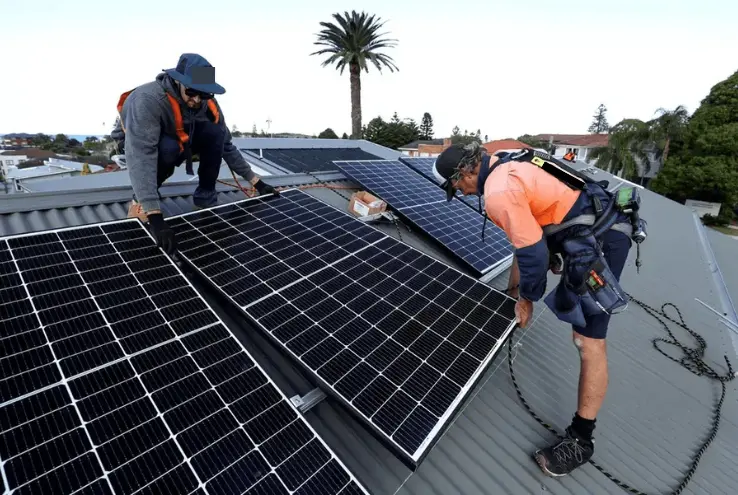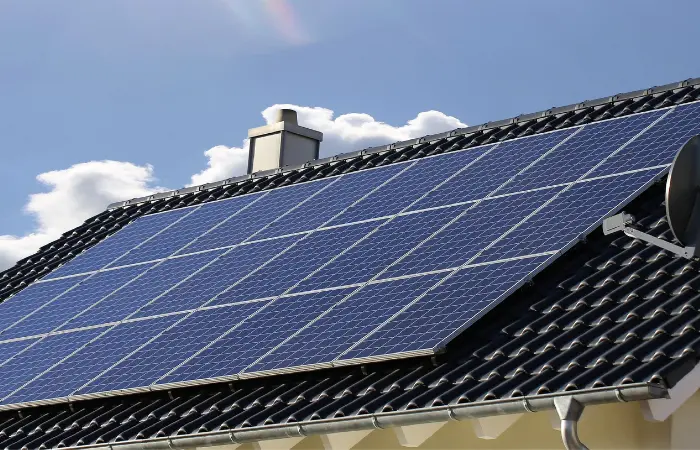A Guide to Choosing the Best 6.6kW Solar System in Sydney
Introduction: In the vibrant city of Sydney, harnessing solar energy is a significant step towards sustainability. Choosing the best 6.6kW solar system in Sydney requires careful consideration of various factors to ensure optimal efficiency and long-term benefits.
Understanding Your Energy Needs:
Begin by calculating your current energy consumption and estimating future needs. Take into account potential changes in usage patterns or energy-efficient upgrades to tailor the system to your requirements.
Solar System Components:
Familiarize yourself with key components such as solar panels, inverters, mounting systems, and monitoring tools. Opt for high-quality components to maximize efficiency and ensure the longevity of your solar system.
Site Assessment:
Evaluate your site for solar panel installation, considering potential shading issues and obstructions. Assess the structural integrity and orientation of your roof to optimize sunlight exposure.
Government Regulations and Incentives:
Stay informed about Sydney’s solar regulations and take advantage of government incentives and rebates. Compliance with these regulations not only ensures a smooth installation process but also enhances the overall value of your solar system.

Budget Considerations:
Understand the cost breakdown of a best 6.6kW solar system in Sydney and explore various pricing models and financing options. Strike a balance between upfront costs and long-term savings, considering the return on investment.
Choosing the Best 6.6kW Solar System Installer:
Research and vet solar installation companies thoroughly. Check for certifications, experience, and customer reviews to select a reliable installer who can guarantee a smooth and efficient installation process.
Maintenance and Warranty:
Be aware of the maintenance requirements for your solar system and explore warranty options for panels and inverters. Ongoing support from the installation company is crucial for the continued performance of your system.
Environmental Impact:
Consider the environmental benefits of solar energy and assess the carbon footprint of different system components. Align your solar system choice with sustainability goals to contribute positively to the environment.

Conclusion:
In conclusion, choosing the best 6.6kW solar system in Sydney involves a thoughtful process encompassing energy needs, quality components, site assessment, and adherence to regulations, budget considerations, reputable installers, maintenance, and environmental impact. By carefully navigating these factors, you can embark on a journey towards a greener and more sustainable energy future for your home in Sydney.
FAQ:
The size of the solar system depends on your energy consumption. A 6.6kW system is a popular choice for many households in Sydney, but it’s essential to calculate your specific needs.
You can calculate your energy consumption by reviewing your electricity bills. Look for the average daily or monthly usage, considering both peak and off-peak periods.
During the site assessment, consider shading issues, potential obstructions, and the structural integrity and orientation of your roof. These factors can impact the efficiency of your solar system.
The payback period depends on various factors, including your energy consumption, local electricity rates, and government incentives. On average, many homeowners see a return on investment within 5 to 7 years.
Solar systems generally have low maintenance requirements. Regular cleaning of panels and monitoring system performance are recommended. It’s also crucial to follow the manufacturer’s maintenance guidelines.
Research and vet installation companies by checking certifications, experience, and customer reviews. Choose a reputable company with a proven track record for quality installations and customer satisfaction.
While it’s possible for some individuals with technical expertise, it’s highly recommended to hire a professional installer. Solar installations involve electrical work and compliance with regulations, and an experienced installer ensures safety and efficiency.
Solar energy is a clean and renewable source, contributing to reduced greenhouse gas emissions. The manufacturing process does have some environmental impact, but over the system’s lifetime, the environmental benefits outweigh the initial footprint.
Yes, many areas, including Sydney, allow homeowners to sell excess energy back to the grid through feed-in tariffs. Check with your local utility provider for specific details on this process.


